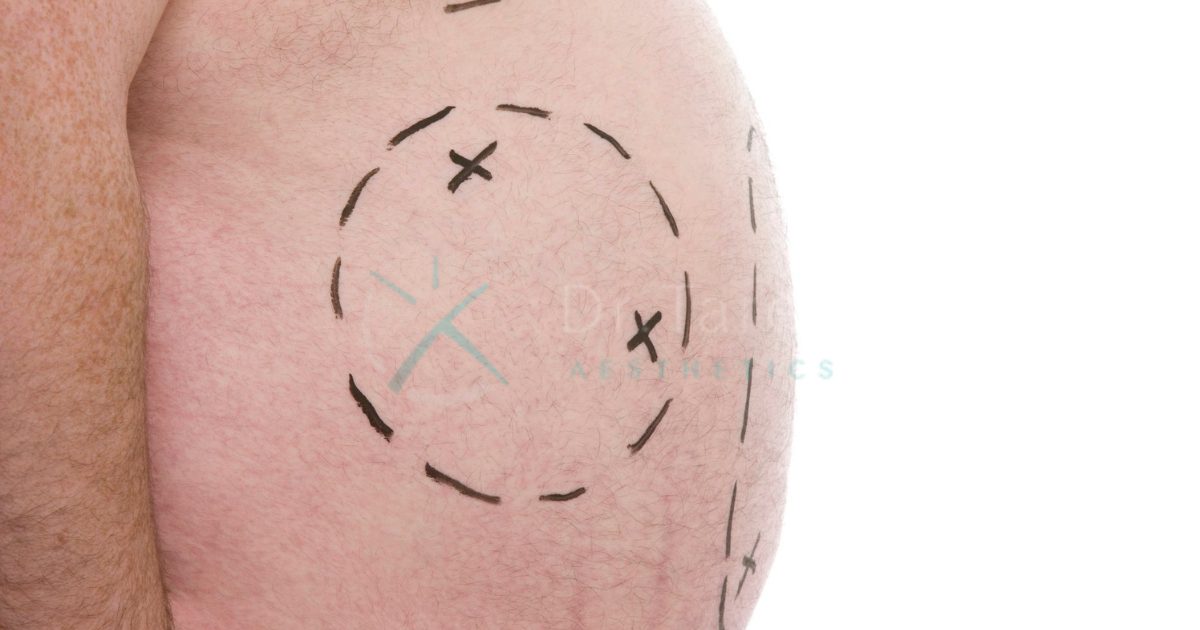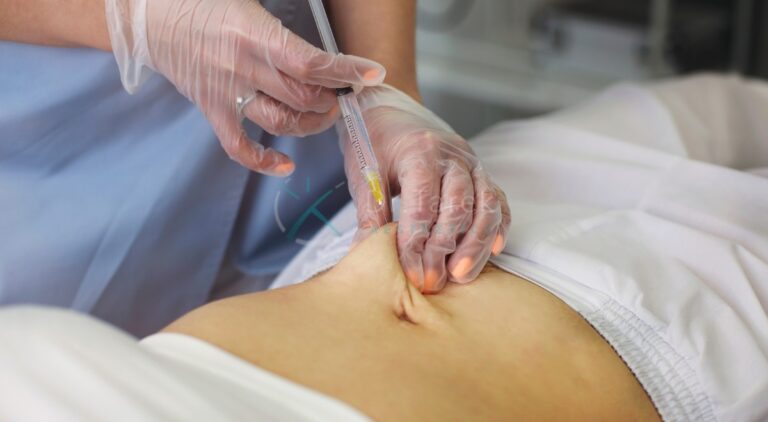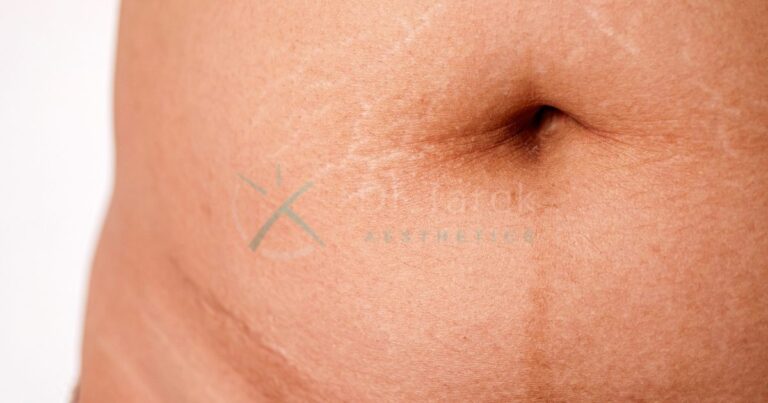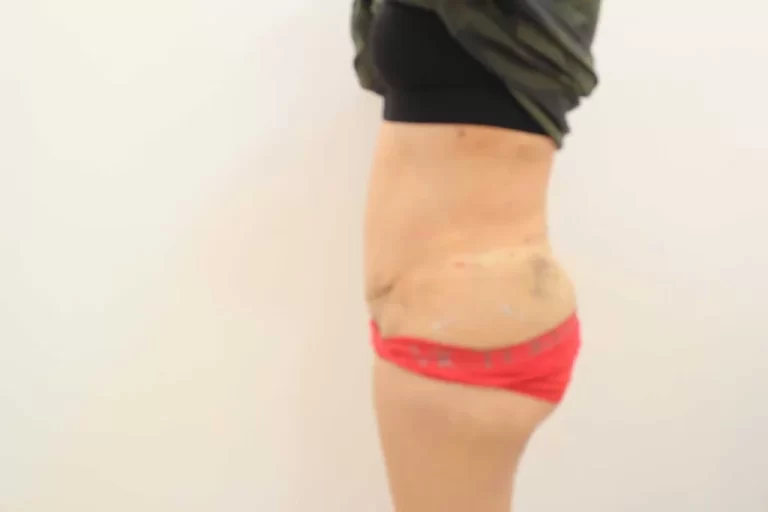Understanding Lipo Fibrosis and Its Causes
Lipo fibrosis is a condition that can occur after liposuction. It is characterized by the formation of fibrous scar tissue. This can lead to hard, uneven areas under the skin, affecting the overall aesthetic results of the procedure. The primary cause of lipo fibrosis is the body’s natural healing process, where excessive scar tissue forms in response to the trauma of surgery.
- Causes of Lipo Fibrosis:
- Excessive scar tissue formation
- Inadequate post-operative care
- Individual healing responses
Reversing Lipo Fibrosis Through Non-Invasive Treatments
Noninvasive treatments can be effective in reversing lipo fibrosis . These treatments aim to break down the fibrous tissue and improve skin texture. Techniques such as manual lymphatic drainage (MLD), ultrasound therapy, and radiofrequency treatment are commonly used.
- Non-Invasive Treatments:
- Manual Lymphatic Drainage (MLD)
- Ultrasound Therapy
- Radiofrequency Treatment
Correcting Uneven Liposuction Results
Uneven liposuction results can be distressing, but they can often be corrected. Non-surgical methods like massage and laser treatments can help, while surgical revision may be necessary for more severe cases.
- Correction Methods:
- Non-surgical: Massage, laser treatments
- Surgical: Revision liposuction
What Is Lipo Fibrosis and How Does It Develop
The Role of Scar Tissue in Lipo Fibrosis
Scar tissue plays a significant role in the development of lipofibrosis. When the body heals from liposuction, collagen is produced to repair the damaged tissues. However, excessive collagen can lead to the formation of dense, fibrous tissue.
Book A Consultation With Dr Tarek Bayazid
Top-rated Plastic Surgeon For Liposuction in Dubai
Installment Plan Available
- Scar Tissue Formation:
- Collagen overproduction
- Dense, fibrous tissue development
Risk Factors for Developing Lipo Fibrosis
Certain factors can increase the risk of developing lipofibrosis. These include the extent of the liposuction procedure, the patient’s skin type, and the quality of post-operative care.
- Risk Factors:
- Extensive liposuction
- Skin type
- Poor post-operative care
Symptoms and Identification of Lipo Fibrosis
Identifying lipo fibrosis early can help manage the condition effectively. Common symptoms include hard, lumpy areas under the skin, pain, and restricted movement.
- Symptoms:
- Hard, lumpy areas
- Pain
- Restricted movement
Treatment Options for Lipo Fibrosis 
Manual Lymphatic Drainage (MLD)
Manual lymphatic drainage (MLD) is a specialized massage technique that helps reduce swelling and improve lymphatic circulation. It can also effectively break down fibrous tissue and improve skin texture.
- Benefits of MLD:
- Reduces swelling
- Improves lymphatic circulation
- Breaks down fibrous tissue
Ultrasound Therapy for Fibrosis Reduction
Ultrasound therapy uses sound waves to penetrate the skin and break down fibrous tissue. This non-invasive treatment can help soften the scar tissue and improve the overall appearance of the treated area.
- Benefits of Ultrasound Therapy:
- Non-invasive
- Softens scar tissue
- Improves skin texture
Radiofrequency Treatment for Scar Tissue
Radiofrequency treatment uses heat to stimulate collagen production and break down fibrous tissue. This can help reduce the appearance of lipofibrosis and improve skin elasticity.
- Benefits of Radiofrequency Treatment:
- Stimulates collagen production
- Breaks down fibrous tissue
- Improves skin elasticity
Preventing Lipo Fibrosis After Liposuction
Proper Post-Operative Care
Proper post-operative care is crucial in preventing lipo fibrosis. Following the surgeon’s instructions, keeping the treated area clean, and avoiding strenuous activities can help in the healing process.
- Post-Operative Care Tips:
- Follow surgeon’s instructions
- Keep the area clean
- Avoid strenuous activities
Compression Garment Usage
Wearing compression garments as recommended by the surgeon, can help reduce swelling and prevent the formation of fibrous tissue. These garments provide support and help shape the treated area.
- Benefits of Compression Garments:
- Reduces swelling
- Prevents fibrous tissue formation
- Provides support and shaping
Importance of Follow-Up Appointments
Regular follow-up appointments with the surgeon are essential to monitor the healing process and address any concerns promptly. These appointments also allow the surgeon to detect and treat any early signs of lipofibrosis.
- Follow-Up Appointment Benefits:
- Monitor healing process
- Address concerns promptly
- Early detection and treatment
Addressing Uneven Liposuction Results
Causes of Uneven Liposuction
Uneven liposuction results can occur due to various factors, including the surgeon’s technique, the patient’s body type, and the healing process. Identifying the cause is the first step in addressing the issue.
- Causes of Uneven Liposuction:
- Surgeon’s technique
- Patient’s body type
- Healing process
Non-Surgical Correction Methods
Non-surgical methods can help in correcting minor unevenness after liposuction. These methods include massage, laser treatments, and radiofrequency therapy, which can improve skin texture and contour.
- Non-Surgical Methods:
- Massage
- Laser treatments
- Radiofrequency therapy
Surgical Revision Options
For more severe cases of uneven liposuction, surgical revision may be necessary. This involves additional liposuction or fat grafting to achieve a more balanced and symmetrical appearance.
- Surgical Revision Options:
- Additional liposuction
- Fat grafting
- Symmetry improvement
Latest Advancements in Lipo Fibrosis Treatment 
Emerging Technologies and Techniques
Emerging technologies and techniques in lipofibrosis treatment offer new possibilities for patients. Innovations such as advanced ultrasound devices and radiofrequency technologies are improving the effectiveness of treatments.
- Emerging Technologies:
- Advanced ultrasound devices
- Radiofrequency technologies
- Improved treatment effectiveness
Research and Clinical Trials
Ongoing research and clinical trials are essential in advancing the field of lipo fibrosis treatment. These studies help develop new methods and improve existing treatments, ensuring better patient outcomes.
- Research and Trials:
- Ongoing studies
- Development of new methods
- Improved existing treatments
Dr Tarek’s Innovative Approaches
Dr Tarek’s innovative approaches to lipofibrosis treatment involve the use of the latest technologies and techniques. His commitment to staying at the forefront of advancements ensures that patients receive the most effective and up-to-date care.
- Innovative Approaches:
- Latest technologies
- Advanced techniques
- Effective and up-to-date care
The Role of Expert Consultation in Treating Lipo Fibrosis
Importance of Choosing an Experienced Surgeon
Choosing an experienced surgeon is vital in treating lipofibrosis effectively. An expert can provide a comprehensive treatment plan tailored to the patient’s needs, ensuring the best possible outcomes.
- Benefits of an Experienced Surgeon:
- Comprehensive treatment plan
- Tailored to patient’s needs
- Best possible outcomes
Customized Treatment Plans for Lipo Fibrosis
Customized treatment plans are essential for addressing lipofibrosis. Depending on the severity of the condition, these plans may include a combination of non-invasive treatments and surgical options.
- Customized Treatment Plans:
- Combination of treatments
- Non-invasive and surgical options
- Based on severity
Dr Tarek’s Approach to Lipo Fibrosis Correction
Dr. Tarek’s approach to lipofibrosis correction involves a thorough assessment of the patient’s condition and a personalized treatment plan. His expertise ensures that patients receive the most effective treatments for their specific needs.
- Dr Tarek’s Approach:
- Thorough assessment
- Personalized treatment plan
- Expertise in effective treatments
Recovery and Long-Term Results
Timeline for Lipo Fibrosis Improvement
The timeline for improving lipofibrosis varies depending on the treatment methods used and the patient’s response. Generally, patients can expect to see improvements within a few weeks to months.
- Improvement Timeline:
- A few weeks to months
- Depends on treatment methods
- Patient’s response
Maintaining Results After Treatment
Maintaining results after treatment involves following the surgeon’s recommendations, including proper post-operative care and regular follow-up appointments. This helps prevent recurrence and ensure long-term success.
- Maintaining Results:
- Follow the surgeon’s recommendations
- Proper post-operative care
- Regular follow-up appointments
Potential for Recurrence and Prevention
If proper care is not taken, lipofibrosis can recur. Preventive measures such as wearing compression garments and following post-operative instructions can help minimize the risk.
- Preventive Measures:
- Wear compression garments
- Follow post-operative instructions
- Minimize recurrence risk
Combining Treatments for Optimal Results
Synergistic Effects of Multiple Therapies
Combining multiple therapies can have synergistic effects, enhancing the overall results of lipofibrosis treatment. For example, combining manual lymphatic drainage with ultrasound therapy can provide better outcomes than using a single treatment method.
- Synergistic Effects:
- Enhanced results
- Better outcomes
- Combination of therapies
Tailoring Treatment Combinations to Individual Cases
Tailoring treatment combinations to individual cases is crucial for achieving optimal results. Each patient’s condition is unique, and a personalized approach ensures that the most effective treatments are used.
- Tailored Treatment Combinations:
- Personalized approach
- Unique patient conditions
- Most effective treatments
Dr Tarek’s Comprehensive Approach to Lipo Fibrosis
Dr Tarek’s comprehensive approach to lipofibrosis involves using a combination of treatments tailored to the patient’s specific needs. His expertise ensures that patients receive the best possible care and achieve optimal results.
- Comprehensive Approach:
- Combination of treatments
- Tailored to patient’s needs
- Expertise in optimal results
Patient Experiences and Success Stories
Real-Life Cases of Lipo Fibrosis Reversal
Real-life cases of lipofibrosis reversal highlight the effectiveness of various treatment methods. Patients have reported significant improvements in skin texture and reduction in fibrous tissue after undergoing treatments.
- Success Stories:
- Significant improvements
- Reduction in fibrous tissue
- Effective treatment methods
Before and After Results
Before-and-after results provide visual evidence of the effectiveness of lipofibrosis treatments. They showcase the improvements in skin texture and overall appearance after treatment.
- Before and After:
- Visual evidence
- Improved skin texture
- Enhanced appearance
Patient Testimonials on Uneven Lipo Correction
Patient testimonials on uneven lipo correction highlight the positive experiences of individuals who have undergone treatment. These testimonials provide insights into the effectiveness of both non-surgical and surgical correction methods.
- Patient Testimonials:
- Positive experiences
- Insights into effectiveness
- Non-surgical and surgical methods
FAQ’s
How long does lipofibrosis last?
If left untreated, lipofibrosis can last several months to years. The duration depends on the severity of the fibrosis and the effectiveness of the treatment methods .
Can massage help with lipofibrosis?
Yes, massage can help with lipofibrosis. Techniques like manual lymphatic drainage (MLD) can break down fibrous tissue and improve lymphatic circulation, reducing the symptoms of fibrosis.
What does lipofibrosis feel like?
Lipo fibrosis feels like hard, lumpy areas under the skin. These areas can be painful and may restrict movement, making it important to seek treatment early.
How do you get rid of fibrosis after lipo?
Getting rid of fibrosis after lipo involves a combination of treatments such as manual lymphatic drainage, ultrasound therapy, and radiofrequency treatment. Consulting with an experienced surgeon is crucial for a customized treatment plan.








